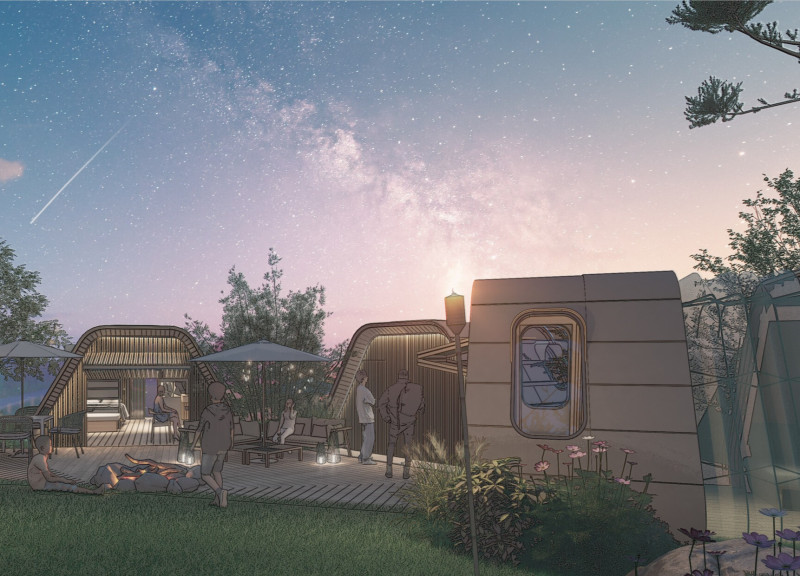5 key facts about this project
From the onset, the design showcases a deep understanding of the site, with careful consideration given to orientation, natural light, and prevailing winds. The architectural layout is strategically developed to maximize views and connectivity to the landscape, fostering a harmonious relationship between the built environment and nature. This integration not only promotes sustainability but also enhances the overall user experience.
As one navigates through the project, distinctive elements stand out, including an innovative façade that combines transparency with solidity. The use of high-performance glazing alongside robust materials like concrete and steel speaks to a commitment to resilience while ensuring energy efficiency. This choice of materials not only contributes to the project’s durability but also complements its aesthetic vocabulary, reflecting a modern sensibility that does not shy away from addressing practical concerns.
The careful detailing of spaces within the architecture reveals a nuanced understanding of human interaction. Open-plan areas encourage social engagement while segmented spaces provide opportunities for privacy and introspection. These spatial arrangements are bolstered by the strategic placement of windows and skylights, flooding interiors with natural light and creating an inviting atmosphere. This deliberate design choice underscores the project’s ethos of fostering well-being among its inhabitants.
Unique design approaches are evident in the incorporation of green roofs and living walls, which not only add a layer of ecological value but enhance the visual appeal of the structure. These elements contribute to biodiversity and assist in managing stormwater effectively, showcasing a forward-thinking approach to urban design. Such integration of nature within architecture emphasizes an understanding of the balance between urban development and environmental stewardship.
Attention to the details in material selection underscores the project’s dedication to sustainability and local craftsmanship. Materials are chosen not only for their aesthetic qualities but also for their ecological impact and performance attributes. This careful curation reflects a broader trend in architecture that prioritizes environmentally responsible practices while still achieving an elegant design outcome.
The project achieves a coherent narrative that aligns with the broader architectural discourse, embracing themes of sustainability, community integration, and user-focused design. It stands as a testament to how architecture can respond to contemporary challenges while enriching the social fabric of the area it inhabits.
For those interested in a more comprehensive understanding of the project's architectural vision, further exploration of its architectural plans, architectural sections, and detailed architectural designs will provide valuable insights. The project's innovative approach to blending functionality with environmental sensibility encourages a deeper appreciation of modern architectural ideas, inviting readers to engage with the design in a meaningful way.


 Zayar Swe ,
Zayar Swe ,  Pyae Phyo Kyaw ,
Pyae Phyo Kyaw , 























